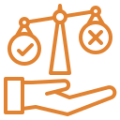Courage involves behavior. Like all behaviors, courage can be developed, encouraged, and reinforced. While a lot of writers have focused on the realms in which courage is applied (e.g., moral courage), military courage, and political courage, it is more useful to understand the common ways that people behave when being courageous, regardless of which realm they’re operating in.
While the realms themselves may have sharp differences, the ways people behave when being courageous within those realms are surprisingly similar. In my work as a courage-building consultant, I have discovered that there are three ways of behaving when your courage is activated. When you become familiar with the three distinct types of courageous behavior, you gain a deeper understanding of how to tap into and strengthen your own courage and the courage of those around you.
I call these three different forms of courage the Three Buckets of Courage.


























